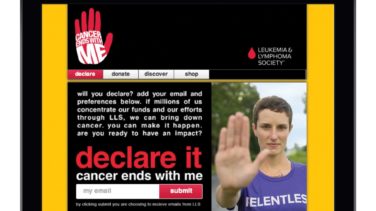A decade into “Big Data” and two decades into CRM, companies should be delivering one-to-one marketing. Instead too many are still asking, “How?”
The answer: Become a content concierge, then regale customers and prospects with a relatable version of your brand’s story. But remember that your brand’s story is not about your brand. It’s about your audience. Your story has to matter to them.
The pharma blueprint comes from sales reps. Ask questions, start with what matters, and punch the key parts. MLR-approved scripts tend to read like a phone book, but reps deliver the info like Olivier.
Follow these four simple steps to make your non-personal promotion personal.
1. (The Right) Data
Knowing that someone has “an affinity for emails,” receives journals X and Y, and attends your dinner programs is channel data—important, but not necessarily personal. To make it personal, you need to know what they want, not merely how they want it.
You need to know what someone likes. The four-letter word “like” made Facebook a juggernaut. “Like” is just as important for you. You need to know someone likes A much more than B and a little more than C. Replace A, B and C with the various parts of your brand’s story such as dosing, efficacy, trial design, etc. You’ll need it for the next section.
2. Lots of Assets
I lived this. In 2008, I started Sequence, a company that personalized medical journals. We registered and profiled the topical interests of about 400,000 clinicians. We used those profiles to create and deliver millions of unique publications in print (yes, print) and online. Novartis, Shire and GSK used Sequence to deliver custom stories and highly targeted messaging by using existing content, which we cut-and-pasted, mixed-and-matched as appropriate for each recipient.
Marketers already have lots of content—it’s just preassembled. Personal marketing needs to be built on the fly from “story sound bites.” Visual sales aids cover 5 to 10 topics. Your MOA video likely has obvious break points. Break them up. If your data say Dr. Smith wants to know about efficacy, start with efficacy. Emphasize it. Don’t bury that person’s lead on page seven. Trust me. The good folks who edit me tell me that all the time. They’re right. Once you break your content into sound bites, simple tagging and technology can take care of the rest.
3. Technology
In 2009, Time Inc. launched an experimental magazine called mine culled from its publications. You picked the titles, Time picked the stories, Lexus picked up the tab. Despite limited content choice, mine was a resounding success with its audience and its sponsor. Time stopped mine after six issues. Why? Time compiled mine by hand. It created 120 unique editions per issue. It took so many resources, Time shut down what could have transformed the publishing industry. R.R. Donnelley snapped up Sequence a couple of years later for the technology that “made print digital”—and would have make mine a snap to produce.
Time’s expertise and updated publishing resources couldn’t make personal work without technology. You’re going to need technology to do be personal. New technologies tend to come from outside providers who specialize in technology and can spread development costs across multiple clients. Your goals, market strategies and knowledge will turn those technological offerings into unique marketing solutions.
4. Gumption
Personal marketing is like social media. Your timeline tells you a story tailored just for you. As a marketer, you have to think like a storyteller addressing one listener at a time. Today’s channels and products are templated to deliver uniform stories. They’ve been retrofitted to seem personal. They’re not fooling anyone. It took guts to be first into Facebook. Now everyone is there.
So how can pharma marketers use these steps to get more personal? Consider a medical conference—yeah, you can personalize a live event too. 1. Ask clinicians what matters to them (data). 2. Grab and tag all you can find about the conference sessions (assets). 3. Reorder and emphasize stuff for each person (technology). 4. Have the guts to actually try something different in this industry (gumption).
Marketers are always excited to claim, “We collect tons of data.” But then they turn their heads to the ground and mumble out of the sides of their mouth, “But we don’t use it.” Using data in conjunction with assets, technology and gumption enables you to finally deliver that one-to-one marketing most brands are still only talking about.








